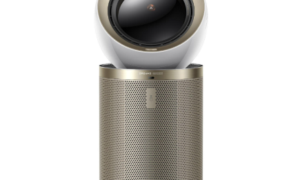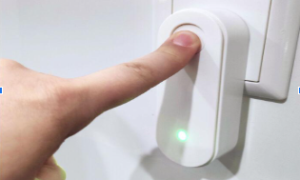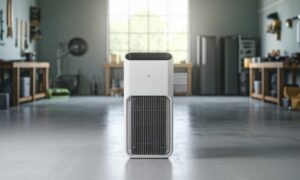The air quality within our homes significantly impacts our well-being, especially when allergens are present. Dust mites, pet dander, pollen, and mold are common allergens that can aggravate allergies and respiratory disorders, affecting overall comfort and health. As indoor air pollution continues to be a growing concern, the need for managing allergens at home emerges as a priority.
This article will explore using vacuum cleaners and air purifiers to reduce allergens within our living spaces, providing practical tips and recommendations to maintain a healthier and more breathable home environment.
The Prevalence of Allergens in Homes

Allergens are everywhere in our homes, often hidden in plain sight. Some of the most common household allergens include dust mites, pet dander, pollen, and mold spores.
Dust mites are microscopic creatures that prosper in warm, humid environments. They often reside in carpets, mattresses, and upholstered furniture, feeding off dead skin cells humans naturally shed.
Pet dander, another prevalent allergen, originates from furry and feathered pets’ skin flakes, saliva, and urine. It can easily become airborne and settle on various surfaces around the house.
Pollen, typically brought into homes on clothing or through open windows, can be a particular nuisance, especially during certain times of the year. Meanwhile, mold spores are produced in damp areas of the home, such as bathrooms and basements.
These allergens can induce a variety of symptoms in susceptible individuals, including sneezing, itchy or watery eyes, coughing, and even asthmatic symptoms. Long-term exposure can also potentially lead to the development of chronic respiratory conditions.
Understanding the sources and effects of these allergens is the first step toward creating a healthier living space. By effectively using vacuum cleaners and air purifiers, we can significantly reduce their presence in our homes.
How to Utilize Vacuum Cleaners to Combat Allergens

Vacuum cleaners play a pivotal role in allergen reduction in our homes. These handy appliances physically remove allergens, such as dust mites, pet dander, and pollen, from various surfaces around the house – carpets, upholstery, drapes, and even hard floors.
Not all vacuum cleaners, however, are created equal. For optimal allergen control, consider using vacuum cleaners equipped with a High-Efficiency Particulate Air (HEPA) filter. HEPA filters are designed to trap extremely small particles, including most allergens.
A vacuum cleaner with a genuine HEPA filter can capture and retain at least 99.97% of dust particles down to 0.3 microns in diameter, significantly surpassing the capabilities of conventional filters. Be sure to check out our review post of the best vacuum cleaners to find the right one for your needs.
Effective vacuuming also involves best practices and techniques. Here are a few:
-
Regularly vacuum high-traffic areas: Pollen and other allergens often hitch a ride into your home on shoes and clothing. Regularly vacuum locations such as entryways and hallways.
-
Go slow: Fast vacuuming doesn’t give the vacuum ample time to extract allergens from the carpet. Slow strokes will provide a more thorough clean.
-
Use attachments: Use the appropriate attachments for different surfaces to ensure maximum allergen removal.
-
Replace or clean filters: Check the manufacturer’s guidelines on when to replace or clean the filters; a dirty filter won’t trap allergens effectively.
In summary, a regular vacuuming routine with a HEPA-equipped vacuum cleaner can significantly reduce allergens in your home, providing a cleaner, healthier living environment.
How to Reduce Allergens with Air Purifiers

Air purifiers are another essential tool in combating allergens within our homes. These devices filter and recirculate the air, capturing airborne allergens like dust, pollen, mold spores, and pet dander.
Like vacuum cleaners, air purifiers with HEPA filters are the gold standard for allergen control. These filters are designed to capture at least 99.97% of particulate matter with diameters as tiny as 0.3 microns. As a result, HEPA filter air purifiers are highly effective in reducing the overall allergen count in indoor environments, leading to improved air quality and healthier living spaces. Before shopping for a quality air purifier for your home, spend a few minutes to check out a comprehensive review here.
For maximum efficiency and effectiveness, follow these guidelines on proper usage and maintenance of air purifiers:
-
Placement matters: Position your air purifier in areas where allergens are most likely to accumulate (e.g., bedrooms, living rooms) and away from obstructions like walls and furniture that impede air circulation.
-
Allow for continuous operation: Most air purifiers are designed for continuous use, so keep them running to maintain clean air consistently.
-
Change filters regularly: Monitor the manufacturer’s recommended filter replacement schedule and ensure timely replacements or cleanings to maintain optimal performance.
Utilizing a HEPA air purifier in combination with proactive cleaning measures such as vacuuming can significantly contribute to reducing allergen levels in your home. Make these devices a part of your allergen management routine for a cleaner, healthier, and more breathable living environment.
Additional Steps to Control Home Allergens

Aside from vacuuming and using air purifiers, there are additional steps one can take to control allergens in the home. Implementing these strategies can greatly contribute to a cleaner, more comfortable living environment:
-
Regular cleaning: Wipe down surfaces like countertops, shelves, and window sills regularly to remove accumulated dust and allergens. Wash linens frequently in hot water to eradicate dust mites.
-
Control humidity: Maintain a humidity level between 30% and 50% to discourage the growth of dust mites and mold. Use a dehumidifier if necessary to keep humidity within the optimal range.
-
Ventilation: Ensure adequate ventilation to facilitate airflow and reduce allergen buildup. Keep windows closed during high pollen season, use air conditioning instead, and maintain clean filters for central air systems.
-
Reduce clutter: Minimize clutter to eliminate hiding places for allergens. Opt for easy-to-clean or sealed storage solutions, and avoid excessive decorations or knick-knacks.
-
Allergy-proof bedding: Invest in allergen-impermeable covers for mattresses, pillows, and box springs to reduce exposure to dust mites and other potential allergens.
By adopting these additional allergen control measures, you can proactively minimize the presence of common indoor allergens, allowing you and your family to breathe easier and enjoy a healthier home.
The Bottom Line
Diligently using devices like vacuum cleaners and air purifiers, especially those equipped with HEPA filters, can substantially reduce the levels of allergens in your home. Nevertheless, for optimal results, these appliances should be used in conjunction with other allergen control strategies like regular cleaning of surfaces and linens, humidity control, adequate ventilation, minimizing clutter, and employing allergy-proof bedding.
Remember, every small action contributes to a healthier home environment, reducing the risk of allergy flare-ups and improving overall comfort and well-being. We encourage you to incorporate these recommendations in managing your home environment. You’ll likely find the benefits worth the effort, enhancing the quality of life for you and your


































